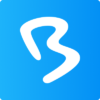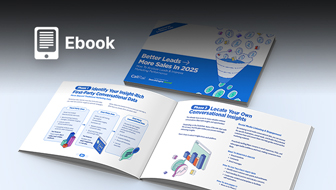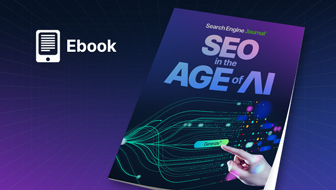This post was sponsored by BigMarker. The opinions expressed in this article are the sponsor’s own.
Wish the time you spent on webinars was clearly reflected in your profit margin?
Want your dedicated webinar viewers to finally make a purchase?
Let’s turn your webinar experience into a successful profit machine.
What Is A Webinar?
A webinar is one of the best ways to convert interested clients into longtime customers.
In short, a webinar is a virtual, online experience in which speakers around the world can connect with a global audience within seconds.
This means that you can expand your brand on a global scale and convert shoppers from any location around the world.
By sharing insider tips, VIP knowledge, and exclusive how to’s, webinar hosts can:
- Captivate an audience.
- Increase brand awareness.
- Generate sales and real revenue.
Webinars can help you grow your brand into a worldwide presence without leaving your office.
With these successful techniques, your business can convince and convert more viewers into customers within minutes.
So, if you’re not earning sales from your webinars, you’re missing major opportunities to grow your business.
Do Webinars Work?
Yes – your viewers are in the best position to take action and convert.
9 out of 10 B2B buyers say online content has a moderate to major effect on purchasing decisions.
Webinars can be a successful marketing tool because the people who watch them are planning to make an immediate change in their lives – you are their catalyst.
Webinars help ensure that a viewer’s successful conversion is with your company.
The key is using your webinar time to educate and impress your way to more sales.
Give your audience insider webinar content, exclusive treatment, and perfectly-timed conversion opportunities.
Take the step to convert your webinar audience into customers with these seven tips to give your viewers the VIP treatment that will drive real sales and profits.
1. Set The Stage: Create Perfectly-Timed, Highly-Personalized In-Webinar Offers
Build up your customer’s excitement and then launch your in-webinar offer.
Think about where each viewer may be in their buyer’s journey.
New viewers may need background information, while repeat watchers will be looking for problem-solving content.
Plan your content stories around each viewer’s need.
This makes your viewer feel like you really hear and understand their needs, which helps generate more sales.
For an added punch, remember, the more relevant and personalized an offer is, the more likely a user will convert.
Think of it this way.
Winning a customer is like sealing any other relationship – you need to prove your value to that person’s specific needs before asking them to buy your product.
Centering your content strategy around your product is the easiest way to achieve that.
Get started with these steps:
- Think about and create content for specific stages in the sales funnel.
- Think about and create content for different buyer personas.
Step 1: Create Content For Specific Stages In The Sales Funnel.
Brainstorm
First, brainstorm different topics that will be useful for different stages of customers, including brand new audiences and those who are deeper in the sales process.
Topic Research
Ask your sales and customer support teams for the questions they get most often from prospects in each stage of the sales process.
Then, create webinars, stories, and online content around those knowledge gaps at each level of the sales and marketing funnel.
Examples Of Top-Funnel Lead Content
Let’s say you’re planning a webinar for a new webinar software company.
Since potential viewers may have little or no knowledge about your product, these top-funnel leads need to learn what your product does and why it matters before they decide to consider a purchase.
A good webinar topic to cover to get new customers interested in your product would be “How Webinars Support Marketing” or “How Webinars Generate Leads.”
Examples Of Mid-Funnel Lead Content
Once your viewers have a basic understanding of your webinar product, mid-funnel leads will want to know how to use your product to solve specific problems.
Consider topics like, “How to Increase Audience Engagement At Your Webinars,” etc.
Besides attracting more viewers, this also helps you qualify your leads, which allows your reps to better personalize their messaging to each prospect – and convert more of them, too.
Step 2: Create Content For Different Buyer Personas
Once you have built a content framework around where a viewer may be in their buyer’s journey, it’s time to consider what each type of person in the journey needs.
Buyer personas can help you drill down to each viewer’s individual needs, making it easier to satisfy and convert them in your webinar.
Consider Who Is Watching Your Webinar: B2B
In a typical firm with 100 to 500 employees, an average of seven people are involved in most buying decisions.
To make a B2B deal, you’ll need to win most – if not all – of those people over.
Think about the type of questions that would be asked by:
- Individual contributors and department leads.
- Company leaders (CEO, CFO, COO).
- Leaders of adjacent departments (marketing leads who work closely with sales & product leads).
Make it easier for viewers of your webinar’s sales pitch to communicate and convince their entire business to get on board.
How To Satisfy & Convert Each Persona
Creating tailored content and in-webinar answers for each viewer is easier than it sounds.
First, consider starting your webinar with information that the end-user will need.
Then, think about what their managers and business leaders may need to approve the purchase.
Make It Easy For Viewers To Get All Of Their Answers
Simply create downloadable handouts with frequently asked questions for each relevant persona, then include them in the webinar and/or follow-up email.
(Need help generating this kind of position-specific content? Ask people from your own company how they evaluate products and approach purchase decisions, then structure your content around those concerns.)
Step 3: Place In-Webinar CTAs That Naturally Show Up When Audiences Need Them To
Now that you have your downloadables and resources planned out, along with the flow of your webinar’s topic, it’s time to place your CTAs.
- Map out your webinar story to appeal to each type of viewer.
- Anticipate where your viewers may naturally have a question. Place a CTA to download resources that answer their questions.
- Decide where your viewers may naturally feel an impulse to buy or schedule a meeting. Place a CTA to connect with your sales team.
2. Become Your Prospect’s Divine Guide: Improve Conversions With Polls To See Who’s Ready To Buy
At any one time, only a small percentage of your audience is actively looking to buy your product.
So, how can you identify which of your attendees are ready to buy right away?
How can you show up as their hero instead of the cold-email salesman?
Asking poll questions during your webinar is the best way to learn about your audience’s buying intent and timelines.
With the information generated with polls, you can reduce the number of cold calls and customize the sales (or remarketing) experience.
Start with the following questions:
- How many people are at your company?
- For what purposes do you use [product/service]?
- How many teams in your company use [product/service]?
- Are you planning to increase your spend on [product/service] this year?
Once you generate this information, use integrations to push it to your CRM or MAS of choice.
Now, your sales team can use it to tailor their pitches for each prospect’s individual needs and questions.
3. Be Clear: Create Well-Crafted Calls-To-Action
By this point, your attendees should resonate with your content.
Your conversions should be increasing.
If they aren’t responding to your offers, it may be because your call-to-action message is not clear enough.
CTAs Should Be Need-Specific
If your call to action message isn’t specific enough, people may not know what you want them to do or why it matters.
So as you design your webinar, confirm that your offer tells people what action to take and why it matters.
CTAs Should Be Visibly Clear
If the offer itself is too small or blurry to be seen, viewers may ignore it.
Consider the screen size and other factors that may reduce the size or clarity of your in-webinar CTA.
CTAs Should Be Bright & Attention-Grabbing
Make your call-to-action offer brightly colored and big enough to draw attention.
Track Attribution, Test & Revise Your CTAs For Success
Anytime you make a change to the style of your CTAs:
- Use your webinar platform’s analytics.
- Track the performance of your offers and tweak copy/strategy as needed.
You may discover that your prospects might prefer webinars to ebooks or product demos.
You might see that more people click on a large, red CTA.
With this knowledge, you can further optimize your future lead nurturing efforts – and earn more customers.
4. Conversations Create Conversions: Involve Your Sales Team In The Webinar
Get your sales team to take over a Q&A at the end of your webinar.
They can speak directly to potential buyers and begin building relationships with them during the session.
This gives your brand major opportunities to increase conversions because your:
- Sales teams will know which features to emphasize and which questions to anticipate.
- Attendees have a personal connection when they receive a follow-up email from that rep.
- Attendees are more likely to reach out and ask follow-up questions and advance further in the sales funnel.
(PS: If your sales reps can’t attend the session, have them send their top prospects a recording after the fact.)
5. Prioritize Your VIPs: Use Data To Qualify & Excite The Right Leads With A Post-Webinar Report
Use findings from your post-webinar report to better prioritize your new prospects.
Now, you can strategically reach out to sales-qualified leads instead of messaging the first 100 people on your list and hoping for the best.
Use Registration Responses To Prioritize Follow-Ups
On your registration form, ask attendees to provide their industry, company size, and/or job title.
This will help you segment your list and prioritize your outreach strategy accordingly.
So, if your sales team converts more marketing managers than they do event managers, they can reach out to the marketing managers first and place event managers on the backburner, etc.
Make Your Dedicated Viewers Feel Special
Your webinar reports should display your attendees’ engagement levels throughout the session.
You can see exactly which attendees were engaged for the longest amount of time and also see who was actively watching at each 5-minute interval of the session.
Use this to identify your most active participants and prioritize them during your follow-up campaign.
Use Q&A, Chat & Poll Responses To Discover Bottom-Funnel Prospects
Similar to engagement metrics, Q&A and poll activity reveals the most interested viewers in your audience.
But beyond that, most webinar reports show the transcript of each question, chat message, and poll response.
So if Suzy asked the host about integrations, her sales rep knows to mention integrations in the follow-up email.
The more you understand your audience’s needs, the more your team can meet those needs – and earn their business.
Connect & Serve Prospects Who Are Long-Time Engagers
The average B2B buyer consumes 13 pieces of a company’s content before making a purchase.
So, it’s important to consider each audience member’s past engagement with your brand, including website visits, content downloads, prior webinar attendance, and on-demand viewing activity.
High levels of activity indicate that the person finds your content valuable, making it more likely that they will become a customer.
6. Be There For Them Wherever They Are: Run Retargeting Campaigns For Previous Attendees
Using the behavioral data generated by your post-webinar reports, create retargeting campaigns for attendees at different stages of the sales funnel.
With inboxes becoming more cluttered than ever, retargeting helps you to continue communicating with leads without relying on email.
How To Create A Solid Post-Webinar Retarteging Campaign
In your ads, refer back to your webinar content and use it to reinforce your product’s value.
Create messages and calls to action that reflect each lead’s place in your sales funnel.
Better yet: The data generated by your webinar will help you tailor these appeals more precisely than ever.
7. Check-In Like Friends: Continue The Relationship
B2B buying decisions are made by committees and often take months to complete.
So it’s possible that your prospects just need more information – or time – to learn about your product before booking a meeting.
In that case, keep the door open by giving them more content.
This way, they can keep you top of mind while they move toward a decision.
Want to host engaging webinars, virtual, and hybrid events?
BigMarker is here to help: Contact us or schedule a demo to get started.
Image Credits
Featured Image: Image by BigMarker. Used with permission.






